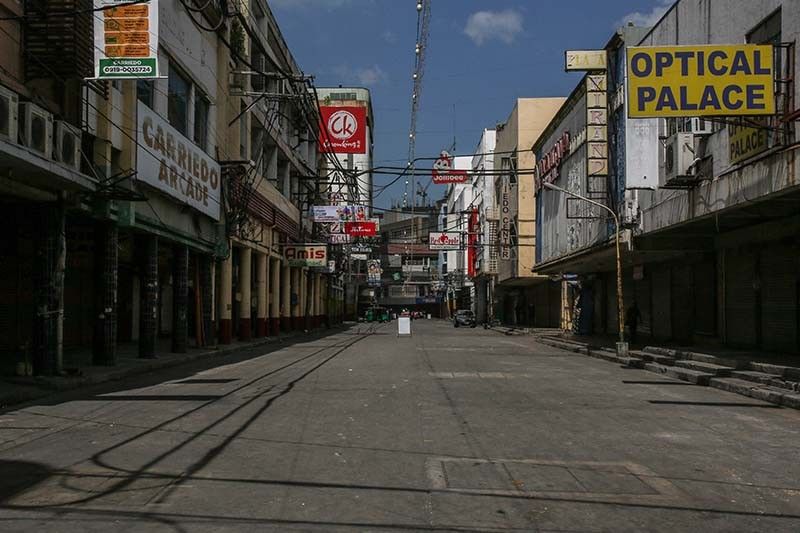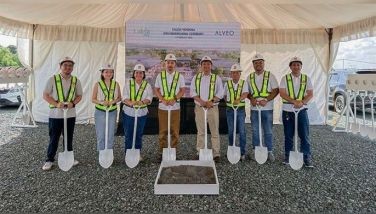How the house-to-house search for people with COVID-19 symptoms will be done

MANILA, Philippines — As Metro Manila and four other provinces revert to Enhanced Community Quarantine, government workers will go house to house to find possible COVID-19 cases.
In a briefing Saturday, presidential spokesperson Harry Roque Jr. said the government will establish “Dharavi-like” centers in communities that will actively look for suspect cases, test, trace contacts, and isolate them.
The Department of Health earlier said it may implement the Dharavi model of containing the COVID-19 outbreak. Dharavi, one of Asia’s largest slums, managed to control the spread of the virus as it surged elsewhere in India.
Among the approaches done there was visiting homes and using mobile screening vans to check for potential COVID-19 cases.
What are the components of this Dharavi model?
According to an Agence France-Presse report, medical workers set up a “fever camp” in a different part of the slum each day so residents could be screened for symptoms and tested for COVID-19 if needed.
Schools and sports complexes were repurposed as quarantine facilities that offered free meals and vitamins.
Strict containment measures such as the use of drones to monitor people’s movements were implemented while volunteers distributed rations to residents.
In July last year, the World Health Organization lauded the efforts of Dharavi and other countries that brought the pandemic other control, saying “a strong focus on community engagement and the basics of testing, tracing, isolating and treating all those that are sick is key to breaking the chains of transmission and suppressing the virus.”
What it is; what it isn't
“We’ll go house to house to look for symptomatic people,” Roque said in Filipino.
The announcement raised concerns on social media, saying the approach can be prone to abuse.
So what does this door-to-door strategy mean and how it will help cut the transmission of virus?
“First of all, this is not a house-to-house [search] for close contacts. It is a house to house [search] for people with symptoms. We will test those who exhibit symptoms,” Roque said in Filipino.
Roque said if a member of a household tests positive for COVID-19, they will be put in isolation.
Active case finding through house-to-house symptoms check is part of the government’s Coordinated Operations to Defeat Epidemic. The CODE—a “patient- and community-focused response strategy” —was first implemented on August 3, 2020.
Other major components of CODE include community engagement activities to promote preventive behaviors, RT-PCR testing for symptomatic patients and implementation of Oplan Kalinga for those needing quarantine and isolation.
Who will do the house-to-house searches?
Roque said DOH personnel and barangay health workers will go house to house in select barangays to identify individuals who are manifesting symptoms of COVD-19.
Is it prone to abuse?
Social media users found the house-to-house search for suspect cases worrying, with some likening it to the controversial “Oplan Tokhang.” As originally planned, cops in “Tokhang” operations would do a house-to-house campaign to convince suspected drug pushers and users to surrender.
But the strategy is being blamed for the deaths of “drug personalities” either in law enforcement operations or at the hands of unknown killers.
Roque said there will be no violation of human rights in the implementation of the strategy “because this is part and parcel of the ongoing quarantine.”
The Coalition for People’s Right to Health said having COVID-19 symptoms should not be likened to a crime.
“The more people are forced to do so with fear tactics, some may resist and be defensive. Having symptoms should not be likened to a crime, but treated appropriately with such patients willing to be tested,” its convenor Joshua San Pedro said.
What happens next?
Local government units should isolate, test and trace the contacts of suspect cases within 24 hours of their detection, Roque said.
Ninety-five percent of close contacts must be traced and isolated or quarantined within 24 hours of case notification.
What should the government, people do?
“At this stage of the pandemic, an ECQ alone will not solve the problems of rising cases, as we must facilitate and enable the public health responses through free testing for all suspects and contacts (hence ‘mass’), urgent contact tracing, and quarantine with paid leave,” San Pedro said.
The DOH said it still has no plans to carry out mass testing even as cases surge. Health Undersecretary Maria Rosario Vergeire said there is no country capable of testing all of its citizens but mass testing does not mean testing the nation’s entire population.
Instead, she said, the government is conducting “risk-based testing.”
For Tony Leachon, former adviser to the National Task Force Against COVID-19, “the best way for patients with symptoms of COVID is to go to barangay health centers or isolation/quarantine facilities where they can be treated with standard medicines.”
- Latest
- Trending



























